Michael Baldea
McKetta Department of Chemical Engineering The University of Texas at Austin, Institute for Computational Engineering and Sciences The University of Texas at Austin
Short-Term Solar Irradiance Forecasting Under Data Transmission Constraints
Mar 19, 2024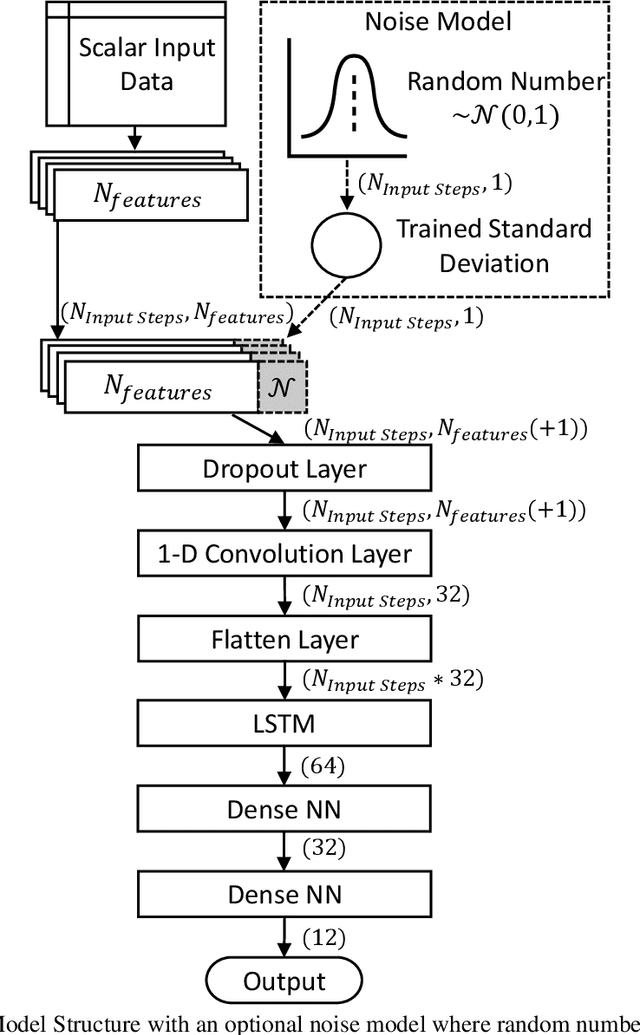

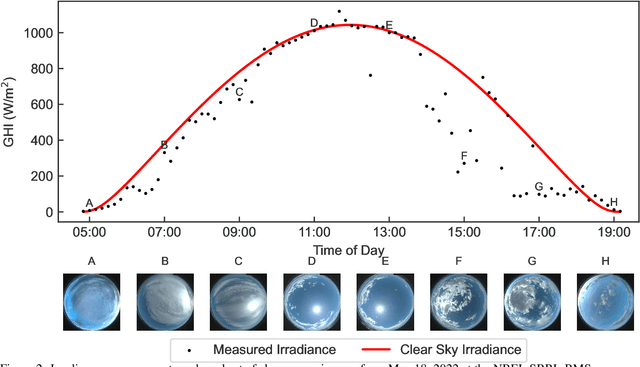
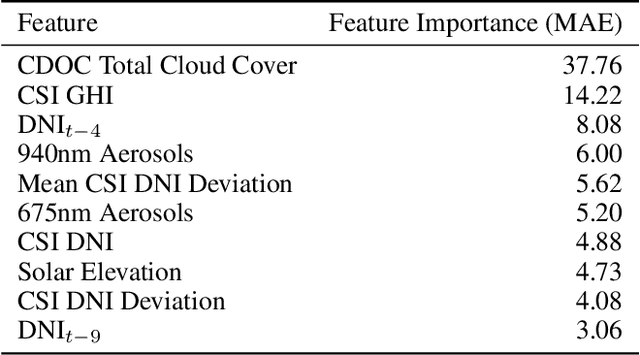
Abstract:We report a data-parsimonious machine learning model for short-term forecasting of solar irradiance. The model inputs include sky camera images that are reduced to scalar features to meet data transmission constraints. The output irradiance values are transformed to focus on unknown short-term dynamics. Inspired by control theory, a noise input is used to reflect unmeasured variables and is shown to improve model predictions, often considerably. Five years of data from the NREL Solar Radiation Research Laboratory were used to create three rolling train-validate sets and determine the best representations for time, the optimal span of input measurements, and the most impactful model input data (features). For the chosen test data, the model achieves a mean absolute error of 74.34 $W/m^2$ compared to a baseline 134.35 $W/m^2$ using the persistence of cloudiness model.
DySMHO: Data-Driven Discovery of Governing Equations for Dynamical Systems via Moving Horizon Optimization
Jul 30, 2021
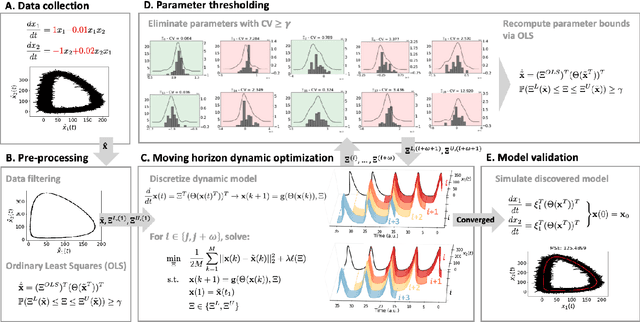
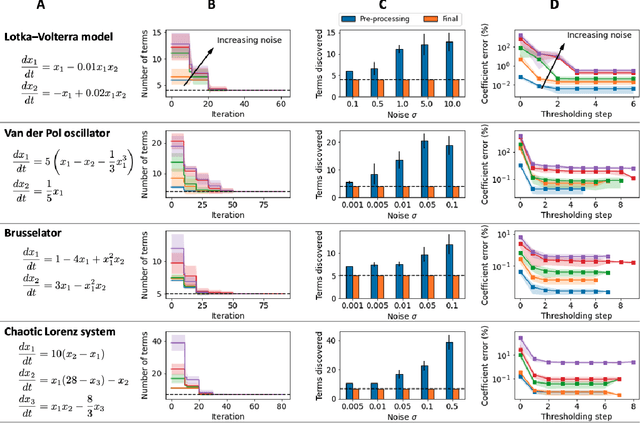
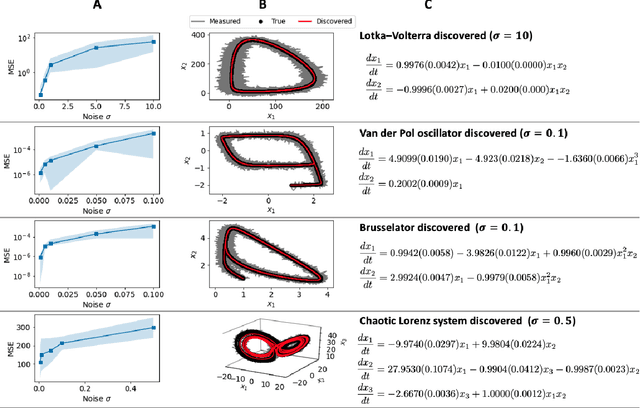
Abstract:Discovering the governing laws underpinning physical and chemical phenomena is a key step towards understanding and ultimately controlling systems in science and engineering. We introduce Discovery of Dynamical Systems via Moving Horizon Optimization (DySMHO), a scalable machine learning framework for identifying governing laws in the form of differential equations from large-scale noisy experimental data sets. DySMHO consists of a novel moving horizon dynamic optimization strategy that sequentially learns the underlying governing equations from a large dictionary of basis functions. The sequential nature of DySMHO allows leveraging statistical arguments for eliminating irrelevant basis functions, avoiding overfitting to recover accurate and parsimonious forms of the governing equations. Canonical nonlinear dynamical system examples are used to demonstrate that DySMHO can accurately recover the governing laws, is robust to high levels of measurement noise and that it can handle challenges such as multiple time scale dynamics.
 Add to Chrome
Add to Chrome Add to Firefox
Add to Firefox Add to Edge
Add to Edge